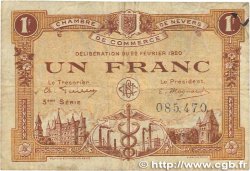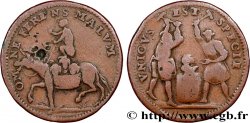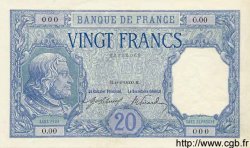E-auction 154-92853 - fjt_375386 - LOUIS XVIII Quinaire de Louis XVIII, frappé durant l’exil n.d.
Чтобы принять участие в торгах, вы должны войти в систему и стать подтвержденным участником аукциона. Войдите, чтобы сделать ставку. Ваш аккаунт будет подтвержден в течение 48 часов. Не ждите до закрытия торгов, чтобы зарегистрироваться.Сделав ставку на данный товар, вы вступаете в юридическое соглашение на покупку выбранного товара и нажатием кнопки «Сделать ставку» подтверждаете принятие вами условий интернет-аукционов cgb.fr.
Ставка может бить сделана только в полном эквиваленте евро. Торги закроются согласно времени, указанному в описании товара, все ставки, сделанные после закрытия торгов, учитываться не будут. Не следует откладывать предложение вашей ставки до последнего момента, так как система может не успеть обработать вашу заявку, и ваша ставка не будет принята. Более детальную информацию вы найдёте здесь: FAQ по интернет-аукционам.
БЕСПЛАТНО.
БЕСПЛАТНО.
| Оценить : | 48 € |
| Цена : | 25 € |
| Максимальная предлагаемая цена : | 31 € |
| Конец торгов : | 28 March 2016 19:06:00 |
| Участников : | 5 Участников |
Тип Quinaire de Louis XVIII, frappé durant l’exil
Дата: n.d.
Металл: silver
Диаметр: 14 mm
Ориентация осей монеты: 12 h.
Вес: 1,57 g.
Век: lisse
Пуансон: sans poinçon
Редкость: R1
Лицевая сторона
Аверс: легенда: LOUIS XVIII ROI DE FRANCE.
Аверс: описание: Buste jeune de Louis XVIII à droite.
Обратная сторона
Реверс: Описание: Deux L affrontés et couronnés dans une couronne ouverte de laurier.
Комментарий
Le futur Louis XVIII, comte de Provence, n’eût pas pendant la révolution une attitude particulièrement glorieuse ni intelligente : “Le 20 juin 1791, date du départ du roi Louis XVI et sa famille des Tuileries, le comte de Provence quitte également sa résidence surveillée. Déguisé, muni d'un passeport anglais, il rejoint ainsi les Pays-Bas, via Avesnes et Maubeuge. Il se réfugie à Bruxelles puis Coblence, capitale de l’électorat de Trèves, dont un de ses oncles maternels est l’archevêque et le souverain. Il rencontre l’empereur Léopold II et lui inspire la déclaration de Pillnitz d’août 1791 qui galvanise la Révolution française. Il refuse de reconnaître l’autorité du roi et se voit déchu de ses droits de prince du sang par l'Assemblée législative en janvier 1792. Il tente de rentrer en France à la tête d’une armée de 14 000 hommes mais doit rebrousser chemin après la bataille de Valmy et se réfugie à Hamm en Westphalie.
En 1793, ayant appris l’exécution de son frère aîné, il se proclame « régent » pour le dauphin, lequel demeure aux mains des révolutionnaires à Paris, et le proclame « Louis XVII ». À la déclaration de la mort de l’enfant, le 8 juin 1795, il devient dépositaire de la couronne de France et prend le nom de Louis XVIII. ( http://fr.wikipedia.org/wiki/Louis_XVIII_de_France )
Ce quinaire présente toutes les caractéristiques qui peuvent le dater du début de l’exil. Tout d’abord le buste, bien plus jeune que ceux de 1814 ou 1815, peut tout à fait dater de 1795.
La technique de fabrication utilisée, archaïque pour 1815, est sans rapport avec un autre quinaire de Louis XVIII, mais de 1816, que nous publions sous la référence fjt_274910. Ce quinaire “d’exil” ressemble aux premiers quarts de francs de Bonaparte, donc de l’an XI. Il ne peut techniquement qu’être antérieur à 1806 / 1808. Le revers est typique de certains revers de la table de jeu du roi comme notre fjt_265498 .
Autre argument pour la période de l’exil, le format et le poids. On ne peut pas penser qu’un royaume maître de ses finances ait pu produire un quinaire aussi rare et ne pas avoir par ailleurs le même type en plus lourd.
Reste à se demander à quelle occasion ce quinaire fut fabriqué et distribué. Espérons que ce n’est pas à l’occasion de la proclamation de sa royauté, puisque celle-ci coïncidait avec la mort de Louis XVII, l’enfant martyr.
En 1793, ayant appris l’exécution de son frère aîné, il se proclame « régent » pour le dauphin, lequel demeure aux mains des révolutionnaires à Paris, et le proclame « Louis XVII ». À la déclaration de la mort de l’enfant, le 8 juin 1795, il devient dépositaire de la couronne de France et prend le nom de Louis XVIII. ( http://fr.wikipedia.org/wiki/Louis_XVIII_de_France )
Ce quinaire présente toutes les caractéristiques qui peuvent le dater du début de l’exil. Tout d’abord le buste, bien plus jeune que ceux de 1814 ou 1815, peut tout à fait dater de 1795.
La technique de fabrication utilisée, archaïque pour 1815, est sans rapport avec un autre quinaire de Louis XVIII, mais de 1816, que nous publions sous la référence fjt_274910. Ce quinaire “d’exil” ressemble aux premiers quarts de francs de Bonaparte, donc de l’an XI. Il ne peut techniquement qu’être antérieur à 1806 / 1808. Le revers est typique de certains revers de la table de jeu du roi comme notre fjt_265498 .
Autre argument pour la période de l’exil, le format et le poids. On ne peut pas penser qu’un royaume maître de ses finances ait pu produire un quinaire aussi rare et ne pas avoir par ailleurs le même type en plus lourd.
Reste à se demander à quelle occasion ce quinaire fut fabriqué et distribué. Espérons que ce n’est pas à l’occasion de la proclamation de sa royauté, puisque celle-ci coïncidait avec la mort de Louis XVII, l’enfant martyr.








 Cообщить об ошибке
Cообщить об ошибке Распечатать страницу
Распечатать страницу Отправить мой выбор
Отправить мой выбор Задать вопрос
Задать вопрос Consign / sell
Consign / sell
 Информация
Информация















